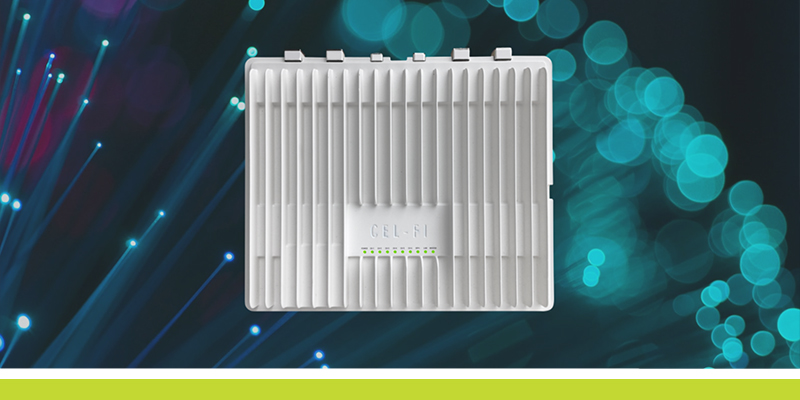
Traditional DAS are the gold standard for amplifying cellular signals in the largest facilities. These systems often use dedicated signal sources and fiber optic backbones to supply the headend and remote units inside a facility for solid transmission speeds up to 1 Gbps.
However, using DAS and plumbing an entire facility or complex with fiber is not always financially viable for most facilities under a million square feet. This is due to the high upfront cost of equipment, extensive length of installation time and contract negotiations with carriers, and extra operating expenses due to heat, electrical, and air conditioning loads.
To address the needs and budget of facilities in this market segment, GetWireless recommends Cel-Fi QUATRA, a fully digital hybrid active DAS introduced by Nextivity in 2017. QUATRA uses coax, category, or fiber where they make the most sense for QoS, installation time, maintenance requirements, and budget.
Installing fiber cable where it is needed
Using Category 5e or better cable between the headend (called a Network Unit or NU) and intelligent remote units (called Coverage Units or CUs) inside a facility, Cel-Fi QUATRA can amplify cellular signal to a maximum of 656 horizontal or vertical feet with up to 100dB gain simultaneously delivered on multiple carrier networks for 3G / 4G / 5G. Coax cable is used from the donor antenna to the NU, and for passive amplification branches extended off the CUs.
A new Fiber HUB add-on to Cel-Fi QUATRA allows fiber runs from the NU to as far as 1.25 miles away, making the active DAS hybrid a viable solution for a multi-building campus – such as a hospital or apartment complex, or senior living community offering all levels of care from independent living to memory care. The Fiber HUB provides optimum utilization of fiber for a high-rise or facilities in remote locations at the edge of macro coverage, such as a data center embedded in a mountain or a tunnel.
With the Fiber HUB, Cel-Fi QUATRA delivers consistent signal gain up to 1000 greater than competitive solutions for all carriers simultaneously, regardless of the varying donor signal strength for different carriers, throughout the buildings of a complex or a high-rise building. The system can be deployed with an off-air donor signal or connected to a small cell to create a distributed small cell network called a Supercell when more signal capacity is needed due to population density inside a facility. And the installation can be accomplished in just days versus months typical of a traditional DAS, and at a fraction of the cost.
What system integrators are saying about Cel-Fi QUATRA with the Fiber HUB:
“The Fiber HUB fits into the infrastructure like traditional DAS but without being traditional DAS. The Fiber HUB allows us to provide cell service to multiple and larger buildings, all while cutting down on the infrastructure costs.”
“The entire system in the three-building complex using the Fiber HUB between buildings, including installation, cost about the same as it would have cost for only a headend of a traditional DAS.”
